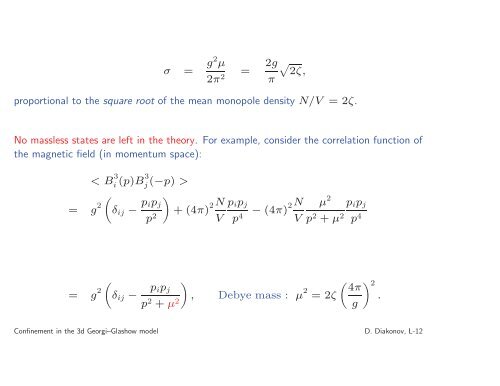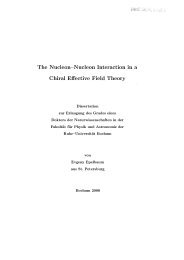t Hooft mechanism of confinement or dual Meissner effect
t Hooft mechanism of confinement or dual Meissner effect
t Hooft mechanism of confinement or dual Meissner effect
You also want an ePaper? Increase the reach of your titles
YUMPU automatically turns print PDFs into web optimized ePapers that Google loves.
σ = g2 µ<br />
= 2g √<br />
2ζ,<br />
2π 2 π<br />
prop<strong>or</strong>tional to the square root <strong>of</strong> the mean monopole density N/V = 2ζ.<br />
No massless states are left in the the<strong>or</strong>y. F<strong>or</strong> example, consider the c<strong>or</strong>relation function <strong>of</strong><br />
the magnetic field (in momentum space):<br />
< B 3 i (p)B3 j (−p) ><br />
(<br />
= g 2 δ ij − p )<br />
ip j<br />
+ (4π) 2 N p i p j<br />
p 2 V p − N<br />
4 (4π)2 V<br />
µ 2 p i p j<br />
p 2 + µ 2 p 4<br />
= g 2 (<br />
δ ij −<br />
p )<br />
(<br />
ip j<br />
4π<br />
, Debye mass : µ 2 = 2ζ<br />
p 2 + µ 2 g<br />
) 2<br />
.<br />
Confinement in the 3d Ge<strong>or</strong>gi–Glashow model D. Diakonov, L-12












